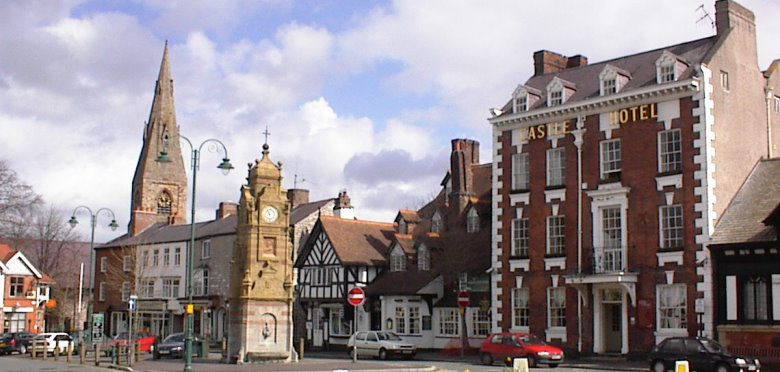Senior housing facilities around the globe are opening their doors to students. The creative solution cuts housing costs for young adults while providing nourishing services for the elderly. Such programs are gaining popularity in the United States. The unlikely pairing comes with an impressive array of benefits for seniors. A study published by the National Institute on Aging (NIA) reveals that changes in social behaviors can prevent or decrease Alzheimer’s disease and other forms of cognitive decline. Seniors can enjoy these improvements without the use of medications or supplements. NIA also reports that intergenerational living can help seniors lower their blood pressure and fend off corresponding illnesses. Researchers cite a strong correlation between loneliness and elevated systolic blood pressure. The same report acknowledges that intergenerational social activities minimize age-related disorders such as rheumatoid arthritis, osteoporosis, and even some forms of cancer. Students also benefit from their involvement in senior care. Many of the programs offer free or discounted rents that reduce student loan debt. In the US alone, student debt exceeds $1.3 trillion according to Forbes. The partnership also contributes to a stronger workforce: young adults can focus on their education, productive internships, and innovative projects instead of working multiple minimum wage jobs to pay rent. One of the earliest intergenerational living programs started in the Netherlands. Humanitas in Deventer hosted five students rent-free in exchange for 30 hours of “good neighbor” service. Activities can include spending time with their elderly neighbors, watching sports and movies together, shopping, and celebrating special occasions. Students also supplement the efforts of professional caregivers when seniors fall ill: Humanitas head Gea Sijpkes reports that companionship during illness minimizes feelings of disconnectedness. It can be challenging when residents’ only interaction comes from caregivers who remind them of their failing...
Similar Challenges
Seniors, students & housing
When it comes to new construction, students are finding themselves in a dilemma similar to renters twice their age. A shortage of affordable and middle-market properties has students and seniors struggling to pay for shelter. Senior Care In senior housing, Boomers face limited affordable and middle-income options for their aging loved ones or themselves. New construction caters largely to high-end buyers. Location is a major factor: seniors’ most desired areas include sites with easy access to public transportation, activities, and proximity to family. These centralized locations come with high land costs. In the end, those costs and the costs of fluctuating building materials roll over to the seniors and their caretakers. Vorice Ratchford served as her mother’s caregiver for nearly a decade. She often checked for housing near her home in a southeastern suburb of Atlanta, but could never find accommodations within her price range. “Even when she was healthier, we couldn’t find housing that we could afford,” recalls Ratchford. “As her health declined—she had dementia—it became even harder.” The Alzheimer’s Association reports that housing costs range from $43,200 per year for basic services to $91,250 per year for a private room in a nursing home. In a single-earner household, taking on additional debt to pay for senior housing wasn’t an option. According to the 2013 Survey of Consumer Finances, the average American household has $15,054.54 in credit card debt, excluding mortgages and auto loans. Ratchford, like many Americans, has been struggling toward debt freedom. Ratchford became a full-time caregiver for her mother, putting three adults on the support of a single income. “I can’t imagine how someone with a full-time job could be a caregiver for someone with dementia,” Ratchford says. “Even with my previous job, every cent of my income would need...
Next Gen Design
Student-Inspired Ideas for Buildings + Cities
Commercial developers are seeking fresh new insights—and in some cases, designs—from the next generation of creative thinkers: students. Developers of small towns and established institutions are looking past architects and into the untested waters of university classrooms. Student-inspired development has become more common throughout the nation, with good reason. To many observers, American architecture had become stale, lacking the creativity seen in other leading nations. The high costs did not yield the cutting edge buildings developers yearned for. In response, educators across the US shifted their focus, intensifying emphasis on innovation and good, old-fashioned out-of-the-box thinking. As an indirect result, universities soon became the place to seek fresh insight at a very affordable price point. Youth has become a unique asset. Creativity flows unhindered by status quo or past disappointments. This generation has also been shaped by rapidly-changing technologies, boundless research opportunities, and an atmosphere that promotes sustainability and resourcefulness. Students have become the ideal inspiration for those who are looking to develop their business, institution, or city on a budget while tapping into the mindset of the future. Montana State University architecture students joined forces to help Big Horn County Historical Museum and Visitors Center recreate its image. Students created displays for the museum, designed a new logo, created murals, and organized a cross-referencing system that would make navigating the ground’s nearly 30 historic buildings more manageable. “The students inspired us to do so many things,” says Diana Scheidt, museum director. Interest in the museum has spiked, particularly due to the students’ model replica of Fort Custer which disappeared nearly a century ago. The young adults brought it back via plenty of research and a nifty 3D printer. School of Architecture students at the University of Notre Dame were called upon to help with future development plans for South Bend (left). South Bend leaders become interested in capitalizing on the group, hoping to reinvent the area as a retail and dining destination for students and visitors alike. To complete the project, the student team studied 11 successful college towns in the US before presenting ideas to community officials and residents. Proposals included the addition of mixed-used facilities with budget-friendly housing, more shops and cafes, and expanded roadways to promote pedestrian traffic and cycling. These projects would help link the isolated university to the nearby town, encouraging economic and social opportunities to flow in both directions. Jitin Kain, director of planning for South Bend, has announced that developments in the downtown area are already in progress. While university students can offer unique insights, the cost effectiveness of their services undoubtedly plays a role in their value. Student projects save cash. Tweaking an amateur project may prove to be more economically savvy than purchasing a design from an established firm. Mayor and trained architect Gavin Harris sought the help of students to create development and expansion plans for the town of Ruthin (right), located in North Wales. His decision was made two fold. Primarily, students are the visionaries of the future and he wanted to ensure that his town would appeal to future artisans and tourists. Secondly, student designs fit the town’s modest budget. “If we had not done it this way, we would never have been able to afford it. A private practice would charge £40,000-£50,000,” he said in an interview with BBC News. The student-led initiative cost less than £5,000. Urban SOS, a student competition sponsored by AECOM and hosted by American Institute of Architects NY, tackled resident issues this year. With the intent of vanquishing the slums, finalist teams focused on a suburb of Ciudad Juarez, the Kiberia neighborhood of Nairobi, and inner Bogotá. The Kiberia team won, taking home $5,000 as a grand prize. They were also awarded $25,000 toward making the project a reality. The neglected neighborhood certainly did not have the funds to propel its own renaissance. Through student award money and free project...



